Like a good many Christmas traditions and trappings, a fresh look at them may return luster to a dullness that can build up with time and custom. In fact, from a cultural perspective, such an exercise is part of the whole purpose of Christmas and the impending New Year.
It’s a time to consider ourselves anew in a light of resolve and appreciation for our blessings. Serving as a means to accomplish this is a story that stands as largely unfamiliar, only because it is largely held as familiar: Charles Dickens’s 1843 masterpiece, “A Christmas Carol.”
This is a story that everyone knows yet few remember for what it truly is: a tale that sings out like a boisterous caroler pounding at the door on the night before Christmas. Its purpose? It’s to awaken us to the reality of our common journey to the grave and the consequent need to love one another along our way.
“A Christmas Carol” is a ghost story in which Mr. Ebenezer Scrooge, a miserable old sinner and tightfisted financier, is haunted on Christmas Eve by his business partner, Jacob Marley, who’s been dead as a doornail for seven years. Scrooge learns from Marley that torments await him in the afterlife for his misspent time.
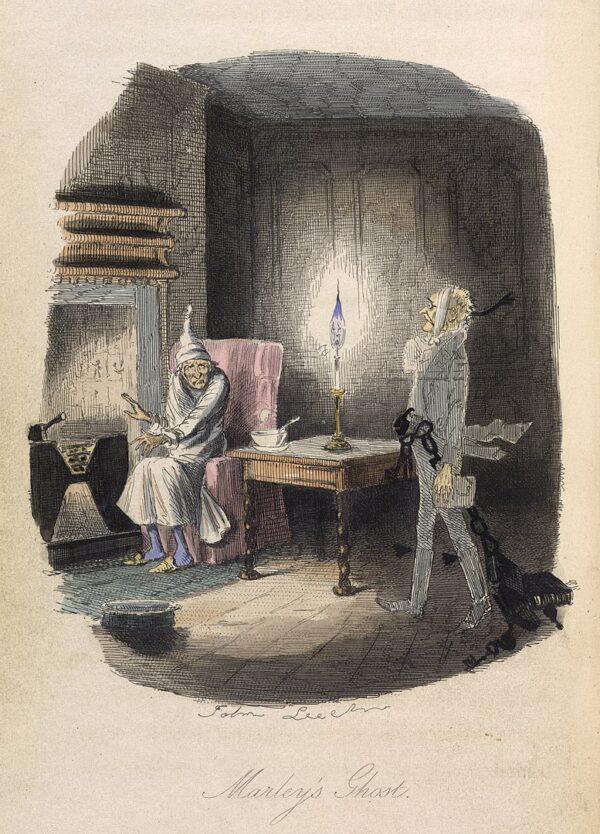
To sidestep the terrible path that Marley’s ghost treads, Scrooge accepts visitations from three spirits who come to offer him reclamation. They show Scrooge how his misery is self-inflicted and how much happiness he stands to gain by simply making others happy.
Christmas a Humbug?
Christmas is a time to remember the fact of our mortality and respond with merriment. It has no particular call to be a fluffy or sentimental affair. Neither is Mr. Dickens’s “A Christmas Carol” a particularly fluffy or sentimental affair, though it is commonly denoted, and thus demoted, as such. This story often falls prey to a misplaced attitude of triviality that Christmas also suffers under; both have succumbed to the paradoxical curse of cliché.As it turns out, Ebenezer Scrooge has proven a soothsayer of our times, for by and large, Christmas actually is something of a humbug these days. It preaches peace but breeds pressure. The ritual of Walmart has replaced the ritual of the wassail. Santa Claus is not really St. Nicholas. The holidays are not really holy days. Christmas is a lost and long-forgotten mystery in need of a great awakening, which is the thundering and laughing message of Charles Dickens’s carol.
“A Christmas Carol” is a story that “brews on a large scale,” offering startling spirits for men to imbibe in misanthropic weather. With the thinning of air, thickening of fog, and icy sting and snap, the climate of Christmas presides majestically over this little ghost story, where a strong punch (in both senses of the word) is precisely the ticket.
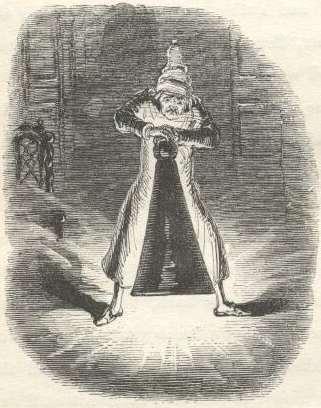
Opening Our Shut-Up Hearts
For this reason, “A Christmas Carol” is an important (if not an indispensable) voice at Christmas, and unlike the customary Christmas fare, it is anything but warm and fuzzy. There is nothing warm about the infernal furnaces that stir Jacob Marley’s hair, or the heartbroken young Scrooge abandoned by his father at boarding school over the holidays, or the cold corpse of Tiny Tim surrounded by his family, or the frozen corpse of Ebenezer Scrooge himself alone and unloved with nightshirt and blankets torn away by his cackling charwoman to be sold in a greasy bone shop.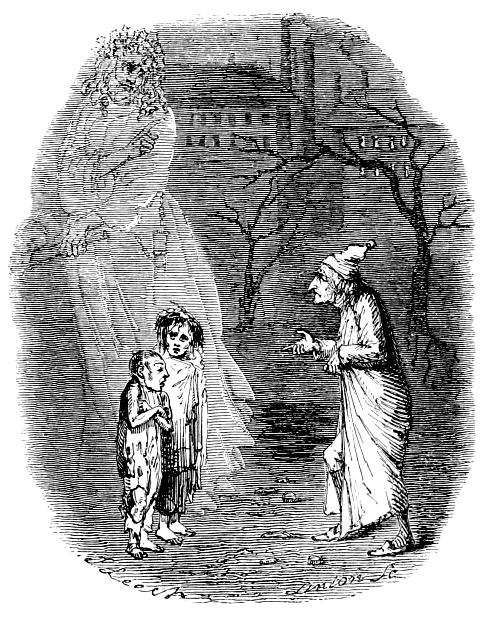
There is nothing fuzzy about the fulfillment of familial devotion, stout neighborly charity, or a changed heart—of which this book boasts in equal measure to its horrors. And it is at Christmas that people should face these realities for what they are, even if they are as disquieting as specters.
Christmas “is a time, of all others, when Want is keenly felt, and Abundance rejoices,” remind the two gentlemen collecting for the poor in Scrooge’s money-changing hole. And the heartbreaking happiness of Christmas resounds in their words, bringing in the dawn of Christmas be they as cold as Scrooge or as warm as his nephew.
His nephew salutes the season “as a good time; a kind, forgiving, charitable, pleasant time; the only time … in the long calendar of the year, when men and women seem by one consent to open their shut-up hearts freely, and to think of people below them as if they really were fellow passengers to the grave, and not another race of creatures bound on other journeys.”
Getting to Know Ourselves
Scrooge’s self-discovery and desire to retract his selfishness is the fruit of the Christmas season. With Scrooge, all can realize a need to purge before answering The Ghost of Christmas’s booming call, “Come in! and know me better man,” and discover the men and women sharing this earth with us, be they ever so lame and blind. And in the words of Tiny Tim, remember the one “who made lame beggars walk and blind men see.”The remarkable power of this story is that it is about everyone, awakening memories of who we are and why we are. But to live the lesson of examination and transfiguration presented by Mr. Dickens is a lofty test. We share the journey with Ebenezer Scrooge: the call to unclench tightfisted hands and lift noses from grindstones begins.
‘God Bless Us Every One’
“A Christmas Carol” is a song of preparation, passage, and praise. It is indeed a Christmas carol, and the process it initiates is not an easy one. Everyone knows in their own way that it is a steep path fraught with difficulty. But as the ghostly mentors of Scrooge held up a mirror to him rigidly, relentlessly, and sometimes reluctantly, so too must we face our own pasts, presents, and futures, our own inward conversions and cleansings.Many, hearkening to this call, swear to lead a changed life that will honor the spirit of Christmas and try to keep it all the year by living in the past, the present, and the future. When, suddenly, we watch our fetters melt away into so many insignificant bedposts, may we all laugh with Ebenezer Scrooge.
And though all the world may laugh at such merriment, “let them laugh,” Mr. Dickens says, for “nothing ever happened on this globe, for good, at which some people did not have their fill of laughter.”
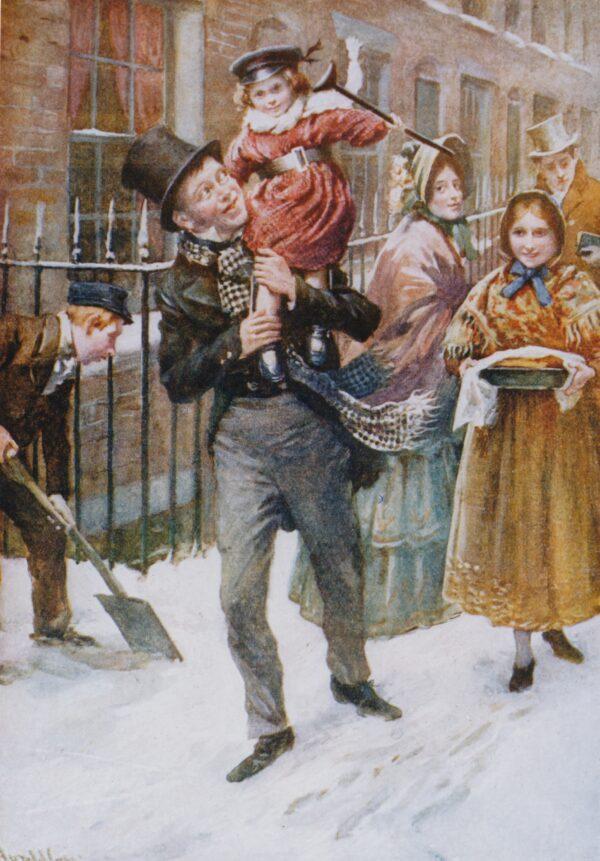
Let the spirits come. Let them start us from slumber. They are harbingers of a greater apparition—an apparition of glory and gladness. “A Christmas Carol” prepares men and women not only for Christmas Day but also for every day: for Life, in all its dignity and dirt. And may it inspire every one of us to cry with every chamber of the heart, “God bless us every one!”

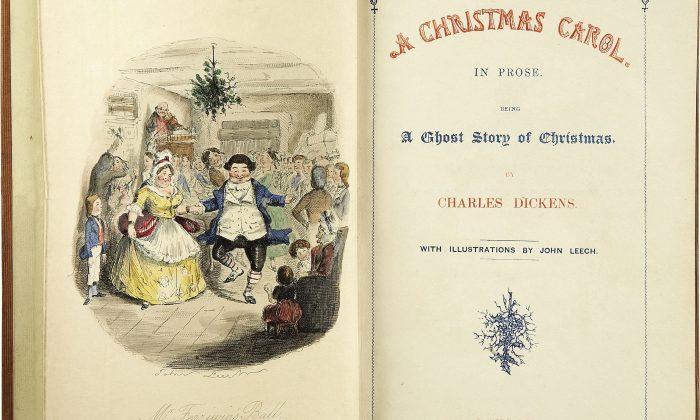
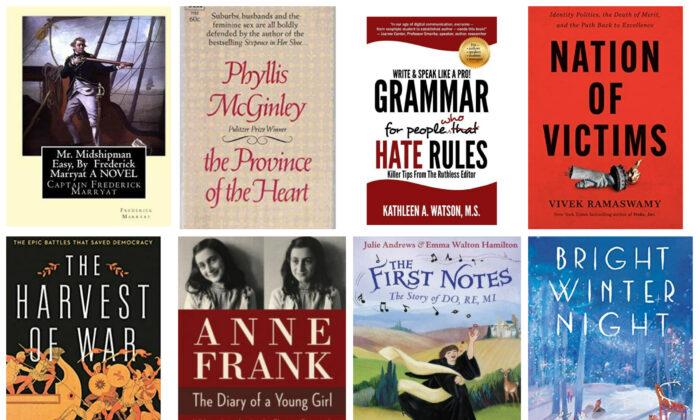
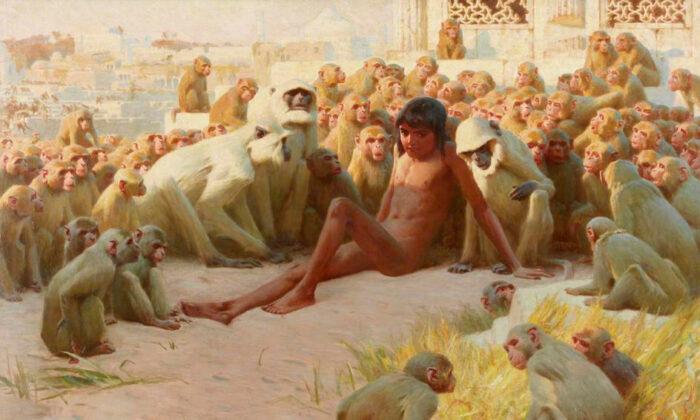
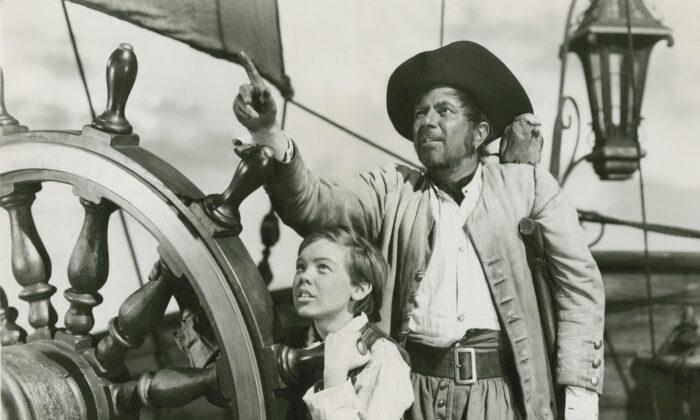
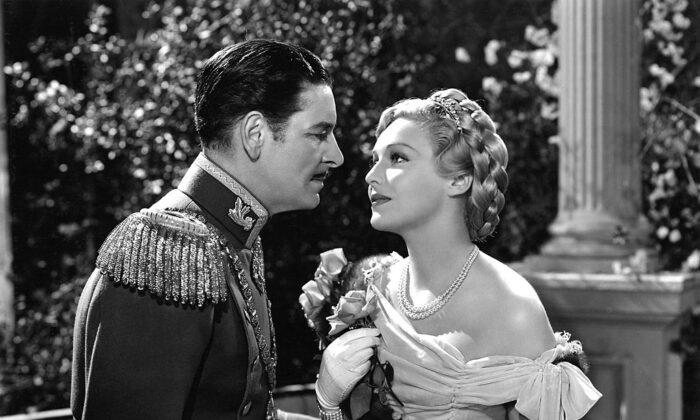
Friends Read Free